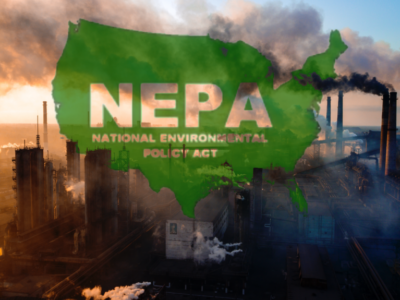What is the “Left Coast” Doing About Climate Change?
Quite a lot, as it turns out. But stronger coordination is needed.
The three West Coast states have a lot in common, including strong commitments to address climate change. They are all taking action on this front, but so far coordination efforts seem weak. Given the situation in D.C., it would make sense for these states to go further in terms of making a collective effort. It would also make sense to go beyond climate issues and start serious collaboration on other issues, such as how to protect public lands from the Trump Administration.
In the meantime, here is where the three Western States are today, in terms of their individual climate efforts and inter-state cooperation.
Washington: Washington has been active in addressing climate change. Politically, the state leans Democratic. The Governor and state House are Democratic; the Republicans effectively have a one-vote majority in the state Senate. The State’s Clean Air Rule went into effect in January 2017. (See here for a good summary.) The rule requires major emitters of greenhouse gasses to limit and reduce carbon pollution and incentivizes investments to reduce fossil fuel use and accelerate the adoption of clean energy. The rule covers businesses that are responsible for about two thirds of carbon emissions in the state, including refineries, paper mills, cement plants, and power plants. Unlike California, there’s no overall statewide cap on emissions. Instead, each facility is assigned its own emission reduction pathway, using its average baseline emissions in 2012-2016 as a baseline. Thereafter emissions must decreases at a rate of 1.7% per year. Every three years, a facility must demonstrate that it met its reduction goals or face penalties. There is also a reserve of emission reduction units (ERUs) to accommodate new facilities. The state allows trading of ERUs and says that trading will also be allowed with out-of-state programs when those are approved (which hasn’t happened so far). The state plans to double its commitment to use electric vehicles for 20% of its fleet; 30% of new vehicles purchases since then have been electric.
Oregon: The governor’s mansion and state legislature are held by the Democrats. Oregon law mandates an end to the use of coal-fired electricity no later than 2035. The law also requires that at least half of the electricity supplied by the state’s largest utilities, Pacific Power and Portland General Electric, come from new renewable sources such as solar and wind power. The state plans to add transportation measures to reduce carbon emissions by 75% below 1990 levels. The Oregon Department of Transportation has a strategic plan to achieve this goal, but it isn’t clear to me what metrics apply and how stringent carbon reduction measures will be.
California: Like Oregon, California is firmly in Democratic control. AB 32 requires that emissions be cut to 1990 levels by 2020. Newer legislation, SB 32, requires a reduction to 40% below 1990 levels by 2030. The Governor has set an 80% reduction target by 2050. Because so much has been written about California’s efforts (not least on this blog), I won’t go into detail here. The centerpiece has been a cap-and-trade program with auctioned allowances, but there are also many individual measures aimed at greenhouse gases other than CO2 and at particular sectors such as electricity.
Joint Efforts: The Pacific Coast Collaborative is a West Coast initiative for climate action and leadership, including these three states plus British Columbia (with Alaska as an observer). (There was also a broader effort called the Western Governor’s Initiative that seems to have fizzled, though perhaps I’m doing it an injustice.) These jurisdictions have signed the Under2MOU, which calls for reductions of greenhouse gas emissions to two tons per capita or by 80–90% below 1990 levels by 2050. One goal is to to create an integrated West Coast market for low carbon vehicle fuels. The jurisdictions have agreed to make all passenger vehicle sales Zero Emissions Vehicles “ZEVs” (presumably electric) as fast as possible, and no later than 2050. There’s also an action plan on ocean and coastal adaptation to climate change, and a plan to promote new water and energy infrastructure. As far as I can tell, the Collaborative plays some coordinating role but isn’t involved in advising on or implementing state (or, in the case of B.C., provincial) climate policy.
It’s easiest to see a path to interconnecting the Washington and California climate schemes, since both involve trading. Because Oregon’s strategy is not yet as well developed, it’s less clear how it can be integrated. ZEVs are clearly a common area of interest for all three states, and one where cooperative effort could help foster a larger market. There are also areas for sector-specific cooperation across all three states, such as reducing emissions from internet server farms and increased efficiency in transporting packages and freight. A good start might be to do a systematic inventory of all the areas where, through diverse state agencies, some type of cooperative venture or information sharing is already taking place.





Reader Comments